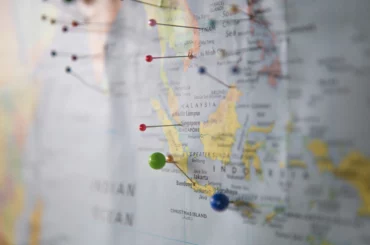Welcome, fellow control enthusiasts, to the art of unlocking quality with Value Stream Mapping techniques.
As though we’re explorers navigating the wilds of efficiency, we’ll chart the flow of information and materials, pinpointing areas of waste.
It’s a bit like stripping down a clunky, old car and rebuilding it as a sleek, purring machine.
The catch? There’s no grease under your fingernails, just the satisfaction of streamlining processes and enhancing productivity.
So, grab your compass, roll out your map, and join us on this quest for quality. It may not be the Indiana Jones adventure, but it’s close enough for the business world.
Understanding Value Stream Mapping
In the realm of process improvement, understanding Value Stream Mapping is fundamental to pinpointing waste, enhancing quality and driving efficiency in operations.
Now, grab a cup of your favorite beverage, sit back, and let’s take a humorous, unconventional journey to the origins of Stream Mapping.
Long before Stream Mapping software became a buzzword in the corridors of operational efficiency, Japanese car manufacturers, in their infinite wisdom, were charting the course of every nut, bolt, and piece of rubber in their production lines. The goal? To make their operations as smooth as a well-oiled sushi conveyor belt, and trim waste with the precision of a samurai sword. This, dear reader, is the humble origin of Stream Mapping.
Fast-forward to today, we have Stream Mapping software – a powerful tool that can plot intricate operational processes with more twists and turns than a roller coaster ride. The software is like one of those genius kids in school, who makes complex problems look as easy as pie.
But, dear reader, don’t be fooled by its intelligence. Like a diva, it demands you to understand its language, needs, and quirks. You need to feed it the right data, ask it the right questions, and interpret its answers correctly. Any misstep, and you might find yourself chasing ghosts in your operations, wasting time and resources.
So, take control, learn the art, understand the software, and let Stream Mapping be the compass that guides you to operational efficiency. And remember, a journey of a thousand miles begins with a single (right) click.
Welcome to the world of Value Stream Mapping!

Benefits of Value Stream Mapping
Why should one consider implementing Value Stream Mapping in their operational processes? Well, the answer is as obvious as the toupee on Uncle Bob’s bald head at the family reunion. The benefits are enormous, tangible, and frankly, a bit of a no-brainer, much like that toupee.
Value Stream Mapping is the secret weapon you never knew you needed, the Batman to your Gotham. It’s all about Mapping Efficiency and Streamlining Processes. To illustrate, let’s take a look at the table below:
| Benefits | Explanation |
|---|---|
| Improve Process Efficiency | Identify waste, streamline your processes, and watch your operational efficiency skyrocket. |
| Boost Product Quality | By mapping the value stream, you can spot the quality bottlenecks and fix them before they become a problem. |
| Enhance Customer Satisfaction | With streamlined processes and higher quality products, customer satisfaction is bound to increase. |
Oh, did we mention that Value Stream Mapping also helps you to better understand your processes, make informed decisions, and take control of your operations? It’s like a control freak’s dream come true!
Steps in Implementing Value Stream Mapping
Moving forward, let’s delve into the four primary steps involved in implementing Value Stream Mapping in your operational processes. Now, don’t be scared, it’s not like mapping the Amazon rainforest, even though sometimes running a business can feel like navigating through a jungle.
The first step is *Identifying the Product*. Think of it as choosing the star for your next big blockbuster movie. The product you choose will dictate the specific path and processes you will map.
Secondly, we have “Mapping the Current State“. This is like playing detective, discovering where your process is now, warts and all. It’s about gathering data, analyzing flows and understanding the Mapping Challenges that might arise.
The third step is “Mapping the Future State“. This is where you get to imagine your process without the warts. You’ll need to envision improvements, eliminate waste, and consider Stream Prioritization. This is your chance to design a streamlined, efficient process that would make even a Swiss watchmaker jealous.
Finally, we come to “Creating a Plan”. Here, you’ll chart the course from your current state to your future state. This is the roadmap that will guide your team, so make sure it’s clear, concise and actionable.
- Identify the Product
- Map the Current State
- Map the Future State
- Create a Plan

Case Study: Value Stream Mapping in Practice
While implementing Value Stream Mapping in theory is critical, observing its application in a practical scenario provides a more tangible understanding of its benefits and challenges. So, grab your safari hat, we’re about to venture into the wild, uncharted territory of real-world applications of value stream mapping.
Let’s consider a case study of a toy manufacturing industry. The company had a workflow as tangled as a toddler’s playroom after a birthday party. They decided to adapt value stream mapping in their process. And boy, did it work like a charm!
The process started with identifying their current state map, which, not to sugarcoat it, looked like a plate of spaghetti. Then came the future state map. This was their vision of an ordered, efficient workflow, not unlike a 1000-piece puzzle, each piece fitting perfectly. The implementation phase was where the real fun began. This was their ‘clean-up time,’ where they began to untangle their process, one step at a time.
The result? A streamlined process, improved lead time, and a significant reduction in waste. Their toy production line was now as smooth as a well-oiled machine, churning out toys quicker than Santa’s elves on Christmas Eve.
Adapting value stream mapping in different industries can be just as effective. Whether you’re baking muffins or building rocket ships, this technique can help you identify bottlenecks and improve efficiency.
Overcoming Challenges in Value Stream Mapping
Navigating the complexities of Value Stream Mapping presents a unique set of challenges that require strategic solutions and meticulous planning. It’s akin to planning a trip through a jungle with a map drawn by a five-year-old. Fear not, dear reader, for we have a machete of wisdom to cut through these Mapping Difficulties.
To overcome these challenges, I’ve compiled a list of Solution Strategies that are more reliable than a compass in the Bermuda Triangle:
- Understand the terrain: Before you start mapping, get to know your process inside out. If you don’t, you’ll map your way into a metaphorical swamp quicker than you can say ‘quicksand’.
- Involve the whole team: This isn’t a solo mission. Engage everyone involved in the process. Remember, more heads are better than one, unless it’s a Hydra, then you’re in trouble.
- Keep it simple: Don’t make your map so complicated that it’d give Da Vinci’s blueprints a run for their money. Make it as simple as possible, but not simpler.
- Continuous improvement: Treat your map like a living, breathing entity. It needs to grow and evolve as your process does, or it’ll become as obsolete as a sundial in a cave.
Conclusion
In essence, Value Stream Mapping can be a game-changer in the realm of quality management.
This technique not only streamlines processes but also uncovers hidden inefficiencies, paving the way for improved productivity and cost-effectiveness.
While challenges may arise, they are not insurmountable.
With a dash of humor and a dose of creativity, one can make the journey of Value Stream Mapping both enjoyable and rewarding, unlocking unprecedented levels of quality in the process.




